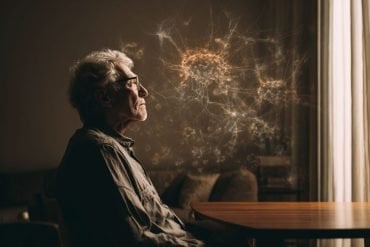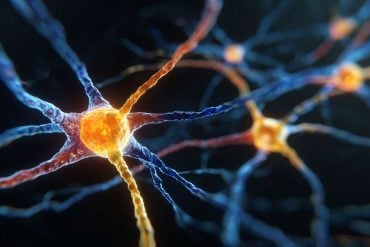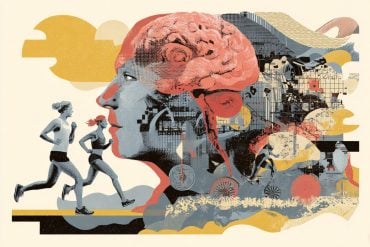Summary: Hypersexual disorder, or sex addiction, in males is associated with higher levels of oxytocin within the blood.
Source: The Endocrine Society
Men with hypersexual disorder may have higher levels of oxytocin in their blood than men without the disorder, according to a small study published in the Endocrine Society’s Journal of Clinical Endocrinology & Metabolism.
Hypersexual disorder involves excessive, persistent sexual behaviors related to various mood states, with an impulsivity component and experienced loss of control.
Oxytocin is a hormone produced by the hypothalamus and secreted by the pituitary gland. It plays a key role in sexual behavior, and abnormal levels of the hormone may contribute to hypersexual disorder.
“We discovered that men with compulsive sexual behavior disorder (CSBD) had higher oxytocin levels compared with healthy men,” said Andreas Chatzittofis, M.D., Ph.D., of the University of Cyprus Medical School in Nicosia, Cyprus and Umeå University in Umeå, Sweden.
“Cognitive behavioral therapy led to a reduction in both hypersexual behavior and oxytocin levels.”
The researchers analyzed the blood samples of 64 men with hypersexual disorder and 38 healthy men and found the hypersexual men had higher levels of oxytocin in their blood. Thirty men with hypersexual disorder went through a cognitive behavioral therapy program and saw a significant reduction in their oxytocin levels after treatment.

“Oxytocin plays an important role in sex addiction and may be a potential drug target for future pharmacological treatment,” Chatzittofis said.
Other authors of the study include: John Flanagan, Jonas Hallberg, Katarina Görts Öberg and Stefan Arver of Karolinska University Hospital in Solna, Sweden; Adrian Desai E. Boström of University of Cyprus in Nicosia, Cyprus and Umeå University; and Jussi Jokinen of Umeå University and Karolinska Institutet in Stockholm, Sweden.
Funding: The study received funding from the Swedish Research Council, the Stockholm Regional Council and the Region Västerbotten.
About this hypersexual disorder research news
Author: Colleen Williams
Source: The Endocrine Society
Contact: Colleen Williams – The Endocrine Society
Image: The image is in the public domain
Original Research: Open access.
“High Plasma Oxytocin Levels in Men With Hypersexual Disorder” by Andreas Chatzittofis et al. The Journal of Clinical Endocrinology & Metabolism
Abstract
High Plasma Oxytocin Levels in Men With Hypersexual Disorder
Context
Hypersexual disorder (HD) involves excessive, persistent sexual behaviors related to various mood states and the diagnosis compulsive sexual behavior disorder is included as an impulse control disorder in the 11th revision of the International Classification of Diseases. Although the neurobiology behind the disorder is not clear, some studies suggest dysregulated hypothalamic-pituitary-adrenal axis. Oxytocin acts as counterregulatory neuroendocrine hormone to cortisol and is also involved in sexual behavior.
Objective
We hypothesized that oxytocin may play a role in the pathophysiology of HD with compensatory actions to cortisol.
Design
Longitudinal.
Setting
ANOVA clinic (Karolinska University Hospital).
Patients or other participants
64 males with HD and 38 age-matched healthy volunteers.
Main Outcome Measures
Plasma oxytocin levels, measured with radioimmunoassay; Hypersexual Disorder Screening Inventory; and Hypersexual Disorder: Current Assessment Scale for assessing hypersexual symptoms.
Interventions
A patient subgroup (n = 30) completed the manual-based group-administered cognitive-behavioral therapy (CBT) program for HD, and posttreatment oxytocin levels were measured.
Results
Hypersexual men (n = 64) exhibited significantly higher oxytocin plasma levels (mean ± SD: 31.0 ± 9.9 pM) compared with healthy volunteers (16.9 ± 3.9 pM; P < 0.001). There were significant positive correlations between oxytocin levels and the rating scales measuring hypersexual behavior. Patients who completed CBT treatment (n = 30) had a significant reduction of oxytocin plasma levels from pretreatment (30.5 ± 10.1 pM) to posttreatment (20.2 ± 8.0 pM; P < 0.001).
Conclusions
The results suggest that the hyperactive oxytocinergic system in hypersexual men may be a compensatory mechanism to attenuate hyperactive stress.






